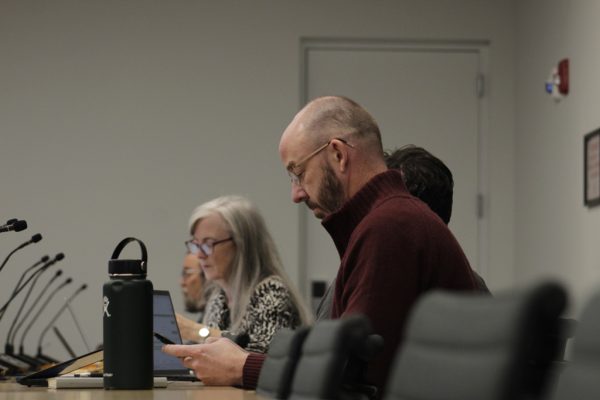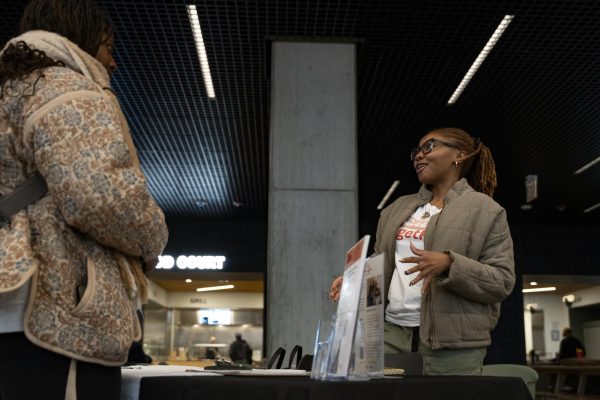Top dogs make top dollars
December 5, 2011
At a mere $13 million, Columbia’s income from grants and contributions lagged far behind that of comparable Chicago colleges in the 2009–2010 fiscal year. The School of the Art Institute of Chicago’s $67 million from grants and fundraising dwarfs Columbia’s take, which was only 29 percent of DePaul University’s $45 million.
Such information can be found on Form 990, the tax document required to be submitted annually to the Internal Revenue Service by all nonprofit institutions and organizations. The form for the 2009-2010 fiscal year, which was released in fall 2011, also contains information about the salaries of top earners
at Columbia.
The 2009 top salary earners include President Warrick L. Carter, in the lead with $395,971, and former Provost and vice president of Academic Affairs Steve Kapelke, whose salary was approximately $237,533.
Increasing by $65,086 from the 2008–2009 fiscal year, Carter’s salary rose because of a $45,000 bonus and $15,971 in “other reportable compensation.” However, $4,115 is unaccounted for.
The top 10 highest-paid administrators remained more or less the same as for the prior fiscal year, though their salaries may have fluctuated slightly. However, Paul Chiaravalle, associate vice president and chief of staff, made the list for the first time in the 2009 fiscal year with a salary of $193,199, making his salary
10th highest.
Others who made the list include Michael DeSalle, former chief financial officer and vice president of Business Affairs, $222,299; Eric Winston, vice president of Institutional Advancement, $209,086; Mark Kelly, vice president of Student Affairs, $207,368; Eliza Nichols, dean of the School of Fine and Performing Arts, $207,132; Zafra Lerman, former head of The Institute for Science Education and Science Communication, $205,213; Annice Kelly, vice president and general counsel of Legal Affairs, $203,883; and Alicia Berg, vice president of Campus Environment, $202, 854.
No raises were given across the board for the 2009 fiscal year, excluding raises to select individuals who may have been given a wage increase for other reasons, such as contractual obligations, according to Ellen Krutz, vice president of Human Resources.
For the 2010 fiscal year, the tax forms will show a 1 percent raise and 1 percent bonus for faculty and staff, according to Krutz.
The total net assets at the end of the fiscal year were up approximately $18 million from the beginning of the year, coming to $198,083,513, according to the Form 990.
A master tax adviser at H&R Block said these numbers were average and the college was “in the black.” However, had raises been given that year, the operating budget could have been significantly affected, she said.
For the 2009 fiscal year, salaries and other compensation totaled approximately $134 million, $6 million more than the prior year. Tuition and fees accounted for approximately $212 million.
The college received more than $13 million in grants and contributions in 2009. While it received approximately $350,000 more than it did the year prior, the sum does not compare to the School of the Art Institute of Chicago, which brought in more than $67 million. However, Columbia surpassed Roosevelt University’s approximate $10 million in grants and contributions.
Columbia’s investment income took a hit of approximately $14 million. This number is $7 million less than the $21 million loss from the prior year, but again, Columbia does not compare to competing schools.
Roosevelt’s investments decreased by $7 million in 2008 but almost completely made up for the loss in 2009, with the exception of approximately $300,000. SAIC’s investment income—which lost more than $47 million in 2008—improved by reeling in more than $44 million.
Income brackets for highest paid salaries for administrators at Roosevelt University and SAIC are relatively close to the income brackets at Columbia.
Most comparable to Columbia’s highest paid was Roosevelt. The university’s President Charles R. Middleton earned $464,303 for the 2009 fiscal year, according to Roosevelt’s Form 990. Income brackets for other administrators at the college were between $145,000 and $264,000, after other reportable compensation.
Patty Heath, Columbia’s interim Chief Financial Officer and vice president of Business Affairs, declined to comment on questions regarding the forms. Attempts to reach several other administrators, such as Eric Winston and Mark Kelly, for comment were unsuccessful.






